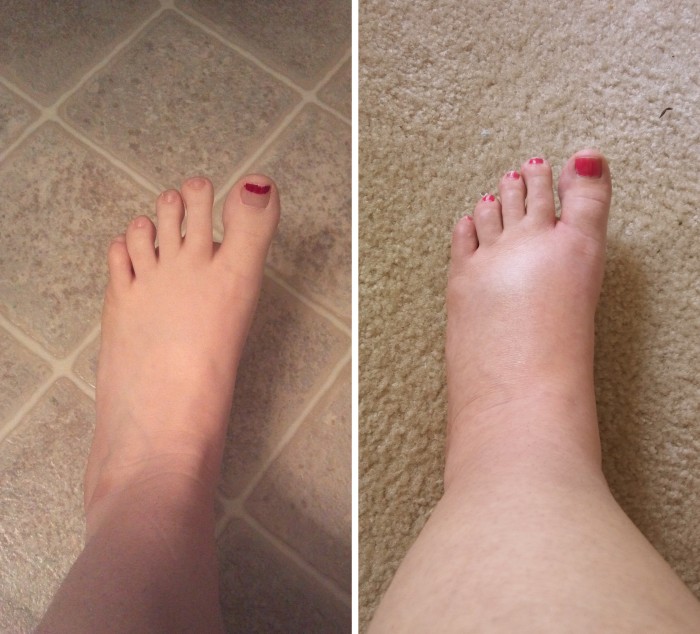If you’re experiencing swelling anywhere around your body, you might find that it is not only uncomfortable but also embarrassing and impractical.
When the problem affects your feet, ankles and legs though, it is even more of an inconvenience. And unfortunately, this is also the area where swelling is most common.
If you’re among those afflicted with constant swelling in these areas, you might even find that it feels a bit like you’re walking along with a space hopper attached to your foot on a regular basis. And for women, this can put an end to your plans of wearing high heels.
One solution is to go to the doctor and to get recommended some sort of blood thinning analgesic (such aspirin). If the swelling is severe, they might even offer a painful steroid injection.
Most of us though would rather not rely on drugs to keep our feet human-sized. So what alternative options are there?
Lifestyle
The best immediate and short term treatment for swollen feet and ankles is to use the ‘RICE’ technique. This means ‘Rest’, ‘Ice’, ‘Compression’ and ‘Elevation’. These techniques will help to reduce swelling by making it easier for the fluids causing the swelling to drain and to circulate as normal around the body.
Of course you’re not likely to be able to lie down with your legs up every time you need to reduce swelling though! A compression sock is something you can wear all the time fortunately but thankfully there are some other options to help things along…
And while you can’t wear an ice pack all day, you can try to avoid excess heat so make sure your socks are breathable and you don’t spend too long in those stuffy shoes! One type of shoe that obvious is not well suited to combating swelling is high heels. Look for comfortable shoes and you’ll find this can make a world of difference. Remember: health before aesthetics!
Exercise is also a good solution in the long term. While you won’t get immediate relief from working out, it will help to improve your circulation in the long term and this can help to reduce swelling that might be the result of pooling blood.
Natural Substances
If you’d rather not pop a pill, you can try popping some food high in magnesium instead. Magnesium deficiency often leads to edema and there are plenty of easy food sources of this mineral.
You can also try using natural vasodilators like garlic which widen the blood vessels and thus help to thin your blood that way. Note that caffeine is a vasoconstrictor and so can have the opposite effect.
Drinking water is also a good idea. Not only does this help to thin the blood but at the same time, it can also help to dilute excess salt in your system.
This can balance your electrolytes and will have a number of other positive health benefits too – bear in mind that the vast majority of us are in a constant state of dehydration! Aim for at least 7 glasses a day (but don’t go over 10).



Comments